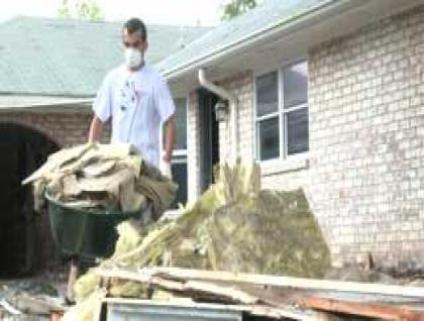WASHINGTON (NEXSTAR) — The world passed the previously unimaginable mark of 1 million coronavirus deaths on Monday, according to the count kept by Johns Hopkins University.
With more than 200,000 deaths, the U.S. has far more deaths than other nations with 1 in 5 of the world’s virus fatalities. Brazil ranks second with 141,000 deaths while India has recorded 95,000.
In the United States, New York still leads with about 33,000 coronavirus deaths followed by New Jersey, Texas, California, and Florida all in the ballpark of 14-16,000 deaths.
The good news: the average number of daily deaths has slowly been dropping over the last few months. The U.S. has seen two distinct peaks in daily deaths with a summertime surge cresting at about half the size of the first deadly wave in April.
The bad news: we’ve seen a slight increase in daily deaths over the last few days. According to the New York Times, U.S. deaths inched up about 2% in the previous 14 days.
Deaths first peaked on April 24 at an average of 2,240 each day as the disease romped through the dense cities of the Northeast. Then, over the summer, outbreaks in Texas, California, and Florida drove daily deaths to a second peak of 1,138 on August 1.
Some states — Florida, Georgia, Mississippi, Nevada, and California — suffered more deaths during the summer wave than during their first milder run-in with the virus in the spring. Others — Michigan, Pennsylvania, Maryland, and Colorado — definitely saw two spikes in infections but suffered fewer deaths the second time around.
When it comes to confirmed cases of the virus, the U.S. hit another milestone last week — 7 million — according to Johns Hopkins, though the real number of infections is likely much higher.
The spike across the Midwest and parts of the West has set off alarms at hospitals, schools, and colleges.
Wisconsin is averaging more than 2,000 new cases a day over the last week, compared with 675 three weeks earlier. Hospitalizations in the state are at their highest level since the outbreak took hold in the U.S. in March.
Utah has seen its average daily case count more than double from three weeks earlier. Oklahoma and Missouri are regularly recording 1,000 new cases a day, and Missouri Gov. Mike Parson, a staunch opponent of mask rules, recently tested positive. Kansas and Iowa are also witnessing a spike in cases. And South Dakota and Idaho are seeing sky-high rates of tests coming back positive.
“What we’re seeing is the newer hot spots rise over the course of the last several weeks, predominantly in the Upper Midwest,” said Thomas Tsai, a professor at Harvard’s Chan School of Public Health.
The U.S. is averaging more than 40,000 new confirmed cases a day. While that number is dramatically lower than the peak of nearly 70,000 over the summer, the numbers are worrisome nonetheless. The nation’s death toll eclipsed 200,000 last week, the highest in the world.
“We’re at a really critical point right now,” said Alison Hill, an infectious disease researcher at Harvard University. “Schools are reopening. The weather is getting colder, driving people indoors. All those things don’t bode particularly well.”
What’s ahead may be worse because the virus is likely to have a seasonal swing similar to other respiratory illnesses.
Scientists do not yet know how much credit, if any, to give to treatment improvements for the decline in daily U.S. deaths. Doctors now use drugs such as remdesivir and tricks such as flipping patients from their backs to their stomachs.
But gains seen on hospital wards are hard to document with national data. Strangely, the death rate for patients admitted to the hospital has not improved, said Ali Mokdad, professor of health metrics sciences at the University of Washington in Seattle. It’s possible that sicker patients are now being admitted to hospitals compared with earlier in the year, while healthier patients are treated at home. That would make it hard to see an improvement in the rate of deaths once patients are admitted to the hospital.
Others insist better treatments must be making a difference.
“We have many more tools in September of 2020 than we did in March of 2020,” said Dr. Amesh Adalja, an infectious diseases expert at the Johns Hopkins Center for Health Security in Baltimore.
And nursing homes are safer, Adalja said. Early in the epidemic, hospitals discharged patients with coronavirus into nursing homes full of vulnerable people.
“We’ve learned from those mistakes,” Adalja said.
The Associated Press contributed to this report.


























